Many ERC20 tokens users decried its high cost of transactions. Meanwhile, some believe that a high transaction fee is a way to mass adoption, but how reasonable is paying a high transaction a route to mass adoption?
Conventionally, ERC20 token holders such as LEDU holders have to swap their tokens on centralized and decentralized exchanges. Swapping or sending ERC20 tokens through Dexes are damned costly. According to Crypto.com, an average ERC20 token swap on top Ethereum Deex, such as Uniswap and Sushiswap, is between $70 and $200. That means someone who wants to pay for a grocery of say $30 could pay up to $10 to swap ERC20 tokens on Uniswap. Hence, users are porting to low fee Ethereum alternatives to send crypto at a lower fee.
This article will discuss how to use Binance Smart Chain and Tron Chain to send crypto.
Top Token standards
Before diving deep into how to send crypto using Binance Smart Chain and Tron Chain, there is a need to explain the various token standards. This will enable readers to know which network suits them while sending crypto.
Although there are several token standards as various networks, we will reference ERC20, BSC, and Tron.
ERC20 tokens such as LEDU, OMG, Link, Shib, etc are Ethereum compliant tokens. BEP20 tokens such as CAKE, BAKE, BUSD, etc are Binance smart chain compliant tokens. TRC20 tokens such as Bittorent, Tron, JUST etc on the other hand are Tron Chain compliant tokens.
Transaction on the BSC
The Binance Smart Chain is a subsidiary software product under the Binance brand. It is parallel to the older Binance Chain, while they are still interoperable. This relationship enables users to enjoy the advantages of both programs, as they are complementary in function.
The major stimulus for building BSC is that Ethereum, its major competitor comes with a high transaction fee. The BSC network offers DeFi services such as sending out cryptos at very low prices.
How to send crypto using Binance Smart Chain
On the BSC network, there are two means of sending Ethereum tokens:
- Sending through supported exchanges
This is choosing the Binance smart chain (Bep20) network while sending. However, it is only possible with the Binance exchange and other Binance based Dexes like Pancakeswap.
- Using a bridge and Web 3.0 wallets like MetaMask, Trust Wallet, Binance Wallets, etc.
The transfer of assets from prior wallets to BSC might not be very straightforward, but the development of the Binance Bridge simplifies the conversion.
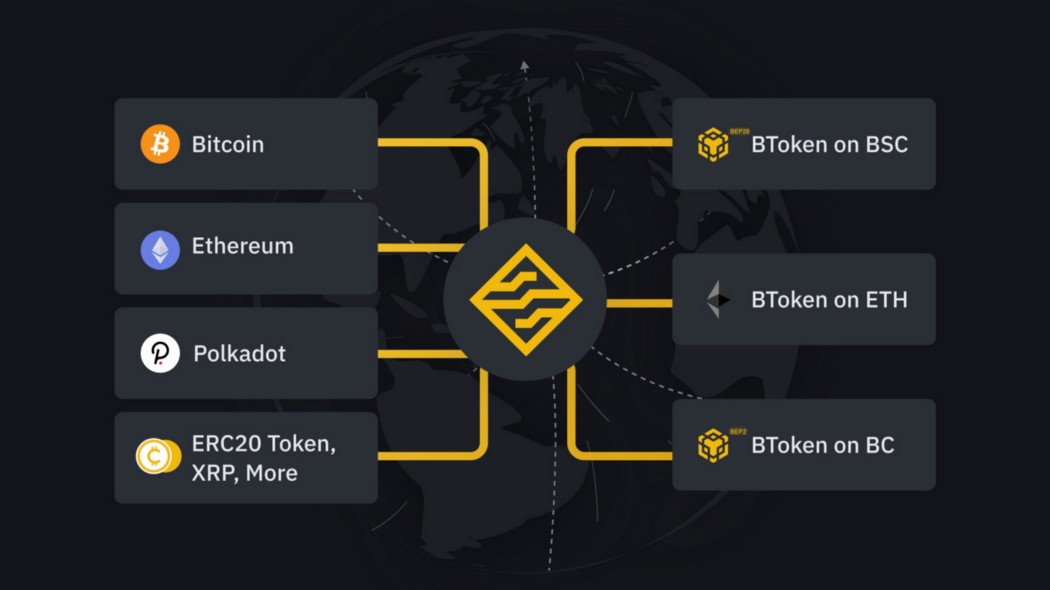
Binance Bridge was developed for asset movement between blockchains without complications. To utilize it, one needs a VPN network to avoid IP restrictions. It builds the link between the BSC wallet and other blockchains, encouraging the transfer of tokens to a BSC wallet with relative ease.
Now that we understand what BSC and Binance bridge mean, here is a guide to linking up your public wallets to BSC!
The first step is opening a BSC account. Then, you will link your other wallet to the BSC wallet. The linking will be done on a Binance bridge site.
The wallet you are about to link must be compatible with BSC to ensure successful linking. Compatible wallets include MetaMask and Binance wallets.
The wallets to be linked can be accessed from a drop-down button on top of the screen. From there, the account to be linked can be selected.
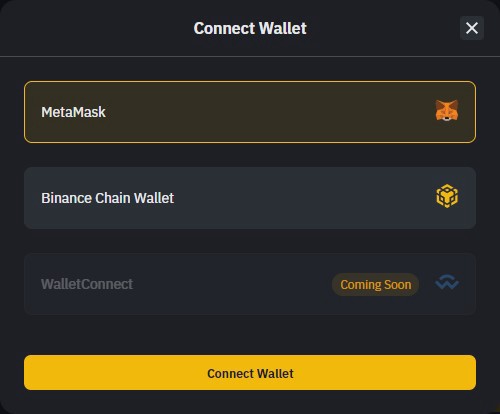
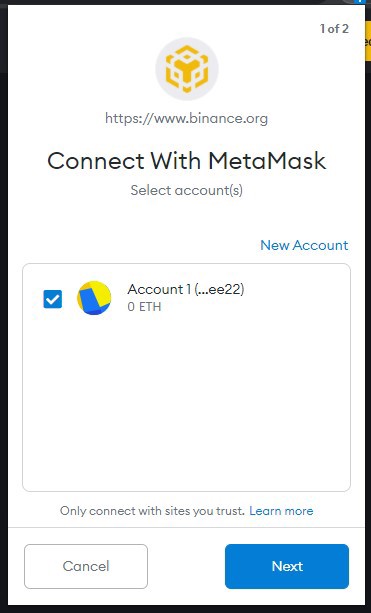
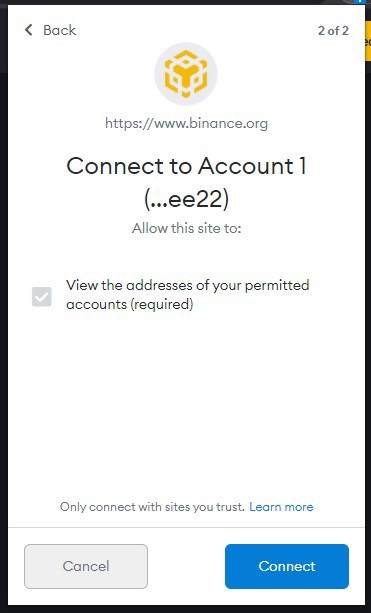
Supported assets can be sent from other wallets to BSC through Binance Bridge upon successful linkage.
While transferring, you have to be careful with the asset you are sending and the network you are sending it from as well as the network you are sending to.
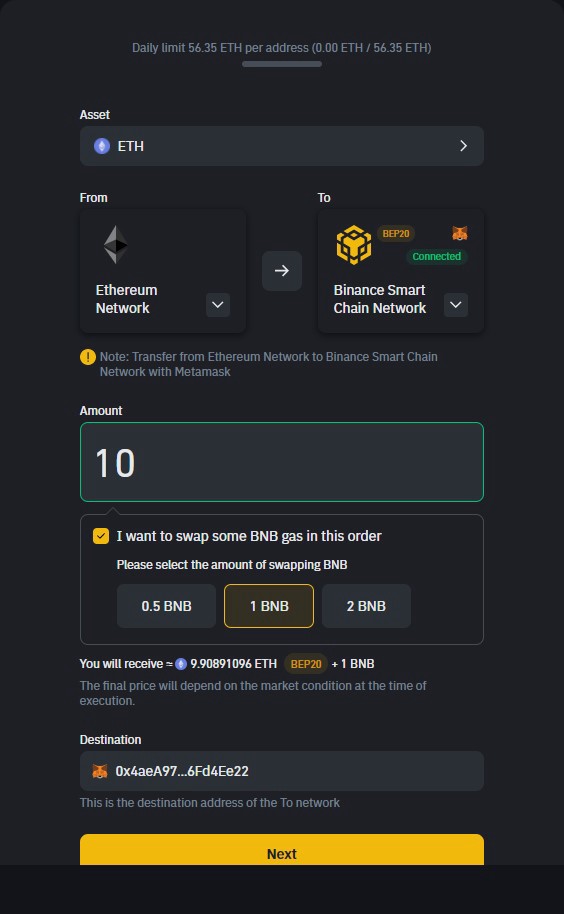
For example, while sending ERC20 tokens to BSC, you will choose ‘Ethereum Network’ for the sending network and ‘Binance Smart Chain Network’ for the receiving network.
Another technicality is that BSC accepts only BSC complaint tokens like Bep20.
For first-time transactions, however, there is an option to convert a little of the tokens being sent into BSC BNB to cover the transaction charge. It appears in a box beneath the transaction page; checking it will ensure that you send your assets without hitches.
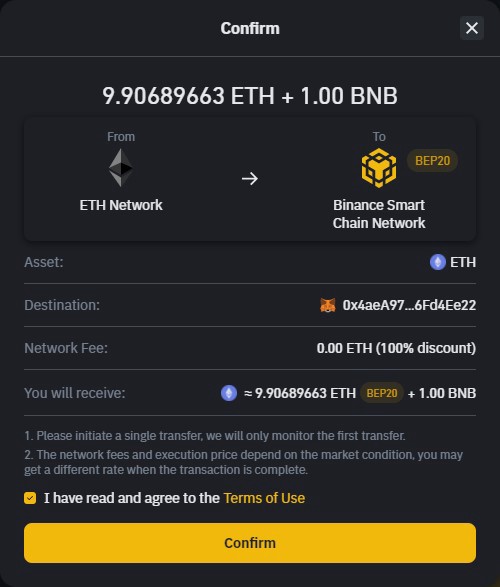
Take care to transfer only little amounts of tokens first, to ensure the setup was completed successfully.
On completion of the transfer, the following page shows an address. That is the bridge through which your assets pass to be deposited in your BSC wallet. It can not be used for any other transaction and has a timer on it after which the transfer order will automatically close.
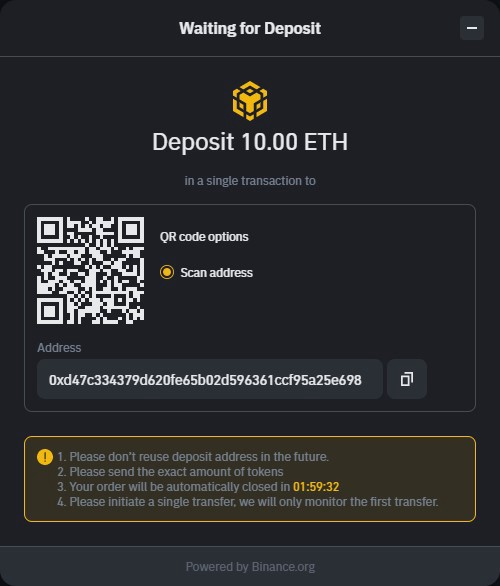
Overall, BSC networks are getting increasingly popular among DeFi users, no doubt because of the very low transaction fees charged on payments and the ease with which users can transfer assets from other public wallets to the BSC wallet.
Transaction on the Tron Chain
Just as many crypto tokens already have decentralized wallet systems for managing and staking assets, TRON has already developed a hardware-software system of its own; TRONSCAN cum Ledger device.
TRONSCAN is the official explorer of the TRX public smart contract blockchain. Like every other explorer, it features a wallet for managing assets and DApps for navigation on the network, and it manages smart contracts on the TRX blockchain.
Tron chain is linked with the TronWallet, which can manage several other tokens. So, users who have accounts on both platforms can enjoy balanced services.
How to send crypto using Tron Chain
Opening a TRONSCAN account is very easy. You will have to create a wallet on that account before opening an account. The account created allows for increased compatibility with TRONSCAN.
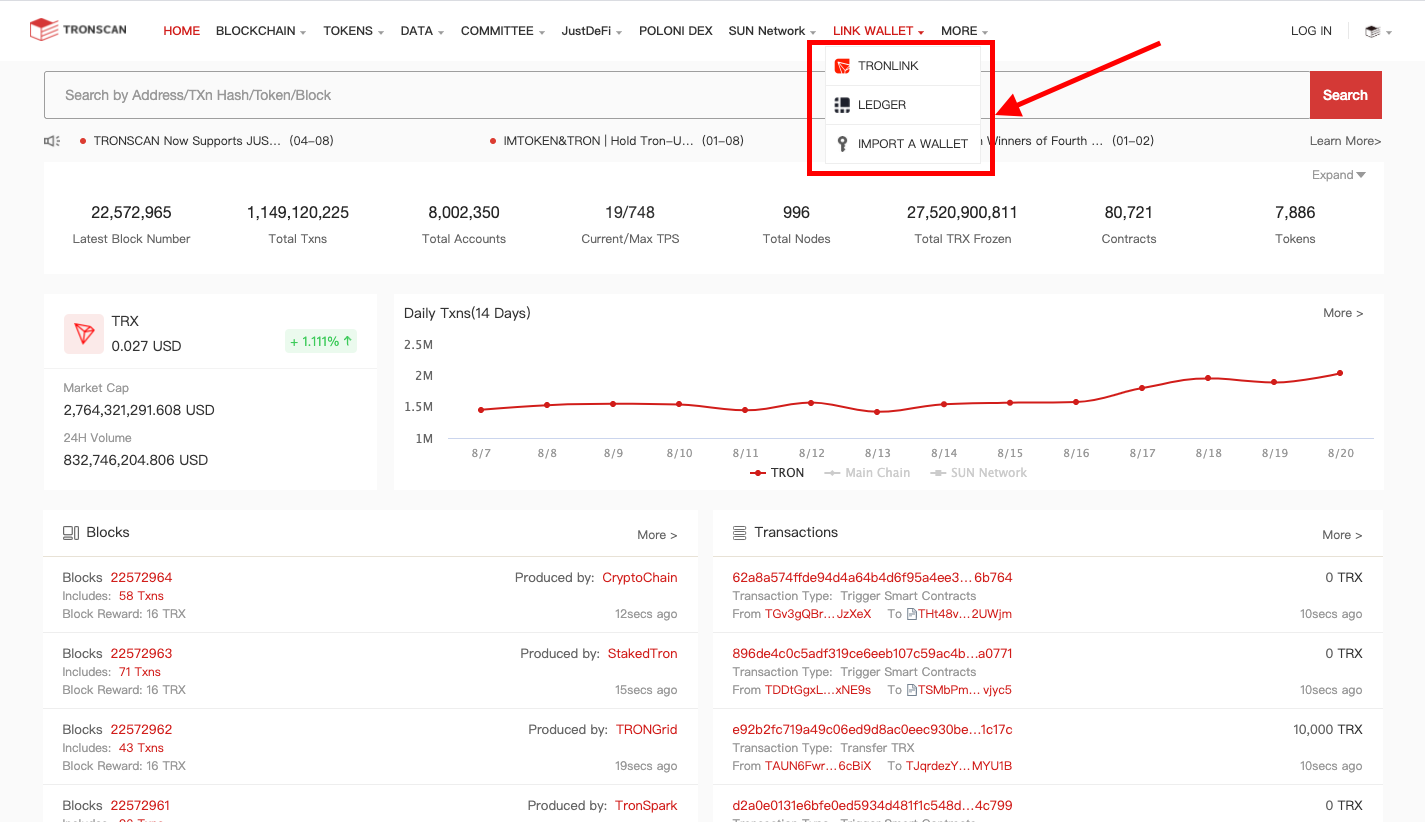
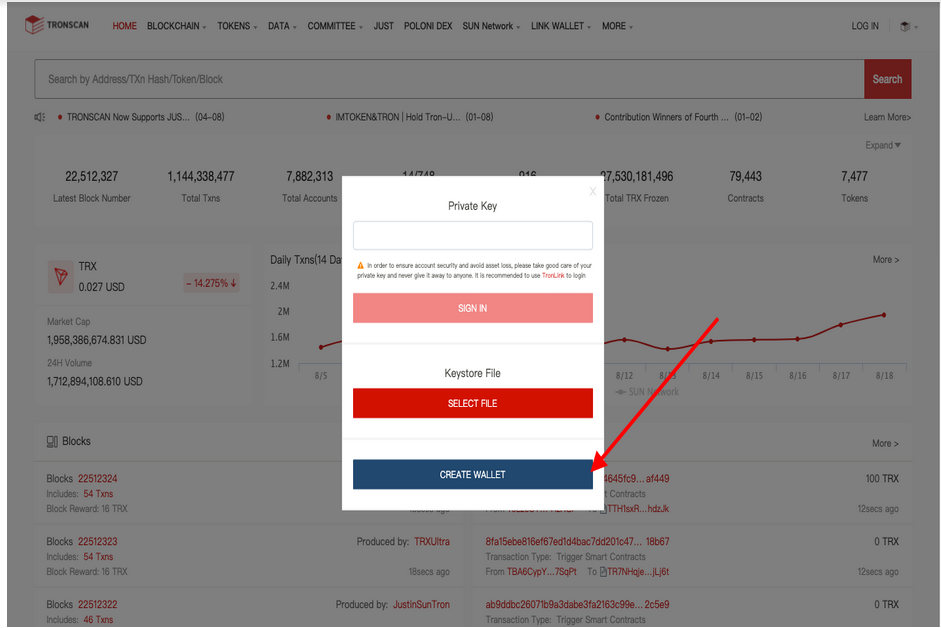
You will have to create a password and download a private encrypted key, with which you will access your wallet. Once these are completed, you can start transactions on TRONSCAN.
Performing transactions on TRONSCAN is simple. Once you have logged on to your account, you will click ‘Link Wallet,’ then ‘Import A Wallet,’ as seen below.


You will then click ‘Send’ and a box will appear, requesting the details of the transaction.
Once you have input the details correctly, you can confirm the transaction.
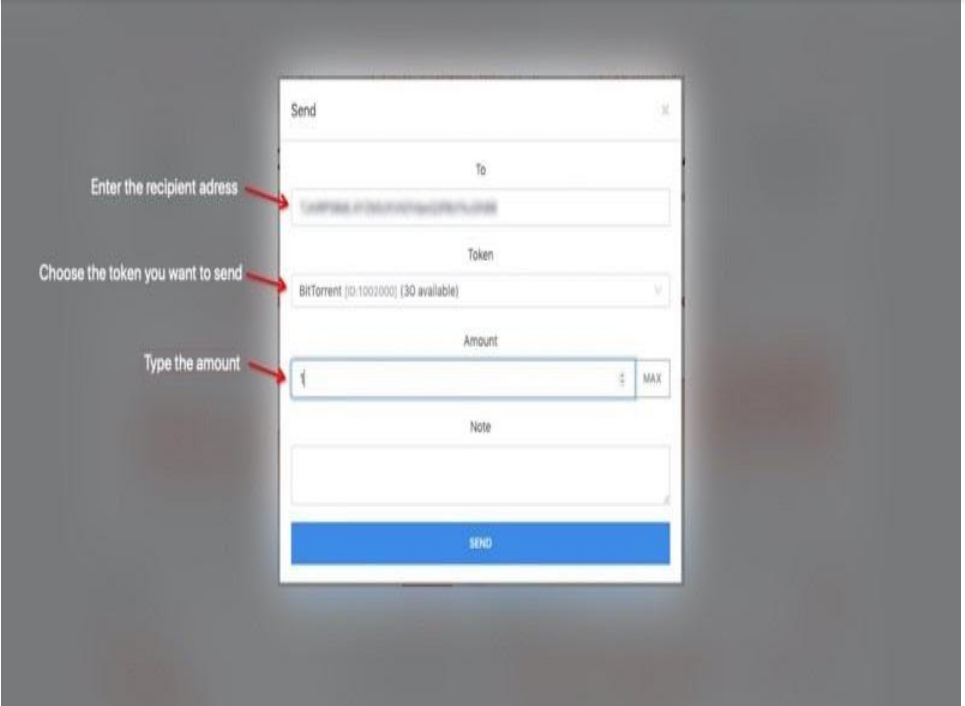
Transaction on TRONSCAN is made more secure by acquiring a Ledger, which is essentially a hardware device linked to your TRONSCAN. Using Ledger requires additional confirmation while carrying out transactions, increasing the security of an account.
Conclusion
This article is a do-it-yourself kind of article. It will guide you on how to send crypto using Binance smart chain and Tron Chain. BeP20 and TRC20 are Binance smart chains and Tron Chain compliant tokens. You have to use a bridge or use a supported exchange to send crypto across any other network, as shown above.







